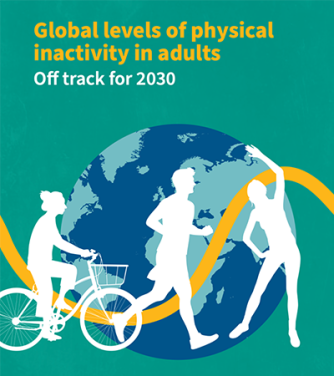
Physical inactivity among adults worrying, says report
An increasing number of adults worldwide are not doing enough physical activity, which in turn will increase the  number of people living with non-communicable diseases (NCDs), according to a new report.
number of people living with non-communicable diseases (NCDs), according to a new report.
The report was undertaken by researchers from the World Health Organisation (WHO) together with academic colleagues and published in The Lancet Global Health journal.
New data show that nearly one third (31%) of adults worldwide, approximately 1.8 billion people, did not meet the recommended levels of physical activity in 2022. The findings point to a worrying trend of physical inactivity among adults, which has increased by about 5 percentage points between 2010 and 2022.
If the trend continues, levels of inactivity are projected to further rise to 35% by 2030, and the world is currently off track from meeting the global target to reduce physical inactivity by 2030.
Physical inactivity puts adults at greater risk of cardiovascular diseases such as heart attacks and strokes, type 2 diabetes, dementia and cancers such as breast and colon, says the report.
With the next UN High-Level Meeting on NCDs scheduled for September 2025, the report is a "wake-up call and provides specific data that can be used to discuss with governments giving credit where it is due, but also holding others to account and asking them to take action to help meet the target," said NCD Alliance Policy and Advocacy Director Alison Cox.
Dr Tedros Adhanom Ghebreyesus, WHO Director-General said these new findings highlighted a lost opportunity to reduce cancer and heart disease, and improve mental health and wellbeing through increased physical activity.
"We must renew our commitment to increasing levels of physical activity and prioritizing bold action, including strengthened policies and increased funding, to reverse this worrying trend.”
The highest rates of physical inactivity were observed in the high-income Asia Pacific region (48%) and South Asia (45%), with levels of inactivity in other regions ranging from 28% in high-income Western countries to 14% in Oceania.
(Graph source: NCD Alliance)
Of concern, disparities remain between gender and age. Physical inactivity is still more common among women globally compared with men, with inactivity rates of 34% compared to 29%. In some countries, this difference is as much as 20 percentage points. Additionally, people over 60 are less active than other adults, underscoring the importance of promoting physical activity for older adults.
“Physical inactivity is a silent threat to global health, contributing significantly to the burden of chronic diseases,” said Dr Rüdiger Krech, Director of Health Promotion at WHO.
“We need to find innovative ways to motivate people to be more active, considering factors like age, environment, and cultural background. By making physical activity accessible, affordable, and enjoyable for all, we can significantly reduce the risk of noncommunicable diseases and create a population that is healthier and more productive.”
The report does find some cause for optimism. Data indicates a declining trend in physical inactivity levels in just under half of countries. In addition, 22 countries were identified as on track.
Recommendations in the new report include:
- Strengthen cross-government policies and actions to create enabling environments and promote physical activity;
- Provide sufficient resources to implement policies, which must be monitored and reported on;
- Build a stronger workforce to act on physical activity policies, including health and social care providers, sport and exercise professionals, and urban and transport planners;
- Focus on women and older adults. Both groups have higher levels of physical inactivity than do men and younger adults, respectively.
Dr Fiona Bull, Head of the WHO Unit for Physical Activity said promoting physical activity goes beyond promoting individual lifestyle choices.
“It will require a whole-of-society approach and creating environments that make it easier and safer for everyone to be more active in ways they enjoy to reap the many health benefits of regular physical activity,” she said.
In light of these findings, WHO is calling on countries to strengthen their policy implementation to promote and enable physical activity through grassroots and community sport and active recreation and transport (walking, cycling and use of public transport), among other measures.
Banner photo by Rex Pickar on Unsplash